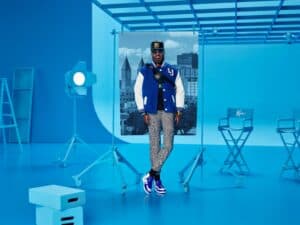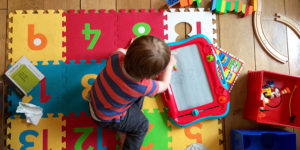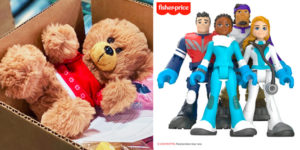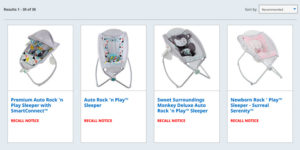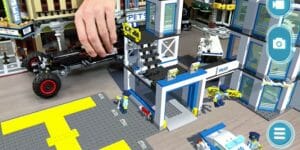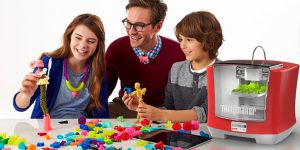Mattel Inc. News
Meet the Newest ‘Kenbassador’: The First of Mattel’s New Celebrity Friends for Ken Is Here
Mattel’s newest Barbie toy is a LeBron James doll.
Is the toy category’s pandemic sales boon coming to an end?
U.S. retail sales of toys climbed 16 percent in 2020, according to NPD Group, as parents indulged their kids during the novel coronavirus pandemic. The same research organization, however, sees potential declines. Do you see many of the routines involving toys adopted during the pandemic providing enough staying power to elevate the category in the years ahead?
Retailers and brands make a quick pivot in the pandemic
Talented executives from a variety of brands and retailers shared their own COVID-19 pandemic experiences at this week’s eTail Digital Summit, with examples of people-first thinking to develop relevant products and content to meet the needs of their customers. What is the best way for brands to stay in tune and/or ahead of the pandemic, economy and social unrest lifecycles?
What can we learn from the Fisher-Price Rock ‘n Play recall?
In mid-April, the U.S. Consumer Product Safety Commission (CPSC) and Fisher-Price issued a voluntary recall of a product linked to the deaths of 32 infants since 2009. What took so long? Where do you see the oversights or faults that led to the tragedies surrounding Fisher-Price’s Rock ’n Play Sleeper?
Is an AR demo better than the real thing?
Trying out a toy in-store can get kids excited about the product. Mattel is now taking this experience into the virtual world with augmented reality (AR) at the shelf. Should brands plan to use augmented reality technology instead of in-store demos for toys and other products?
How will 3-D printing take hold at retail?
According to a survey from Interactions, 95 percent of shoppers are looking forward to purchasing products created through 3-D printing. Yet the technology, around since the late 1980s, continues to take a slow path to retail. Do you see 3-D printing remaining largely a novelty attraction at retail over the next few years?
Diversity Barbie
Long criticized for her unachievable body proportions, Mattel last week unveiled curvy, petite and tall versions of Barbie. Will girls better relate to the new range of body types for Barbie? How do you think the changes to the line will affect the brand’s future?
Barbie and Spiderman target grownups
For more than five decades, both Barbie and Marvel’s iconic superheroes targeted boys and girls. But both are now rolling out extensive licensing arrangements targeting more mature audiences. Why after all these years do you think Barbie and Marvel’s superhero characters are presenting licensing opportunities in adult categories?
Barbie Meets American Girl in Buenos Aires
Celebrating her 50th year in 2009, Barbie at long last is getting into retail. A six-story, 37,000 square feet flagship palace opened in Shanghai in March of this year, but a smaller version has quietly been in operation since late 2007 in Buenos Aires. What would you think of Mattel opening a Barbie-themed store in the U.S.?
Barbie Wins Bratz Catfight
In a hotly-contested copyright infringement case, a federal judge last week handed the rights to the Bratz dolls franchise to Mattell Inc., the creator of rival Barbie. The ruling came several months after a federal jury found that the creator of the Bratz doll came up with the design while working for Mattel. What should Mattell do with the Bratz brand?
Mattel Apologizes to China
On Friday, Mattel Inc. made a public apology to China for damaging the country’s reputation stemming from a spate of toy recalls over the summer. The surprising move – which opens up Mattel to numerous lawsuits around the recalls – was seen by some as an extraordinary attempt to placate its biggest supplier, China, where it manufactures 65 percent of its toys. What do you think drove Mattel’s public apology to China?
BrainTrust Query: Is a ‘Made in China’ backlash coming?
The other day, a national business news show explored the dangers of lead content in products imported from China, which is the primary, though not exclusive, concern of recent recalls. At one point, a guest expert specifically warned of the dangers of unbranded products of Chinese origin designed for children that are available at dollar stores. With regard to product safety, do dollar stores face a greater risk than most retailers, due to their connection to private label and non-branded merchandise of Chinese origin?
A Retail Toy Story
The cable company wants to buy the Magic Kingdom, KB Toys is closing stores, there’s a mini Toys “R” Us in the local supermarket and you may have a three-month wait to buy the latest and greatest new toy at Wal-Mart’s everyday low prices if some manufacturers shift their focus to toy stores as promised. What do you think are the biggest challenges facing toy manufacturers and retailers? Is optimism about a rebound in the category justified?
New Project Strives to Foster Creative Thinking
In an effort to invent original new toys, Mattel Inc. has launched an unusual process named Project Platypus aimed at unleashing employees’ creativity. How can retailers foster “out of the box” thinking within their organizations?
© 2025 RetailWire · Privacy Policy · Terms & Conditions · Community Guidelines · Sitemap · Do Not Sell My Data

